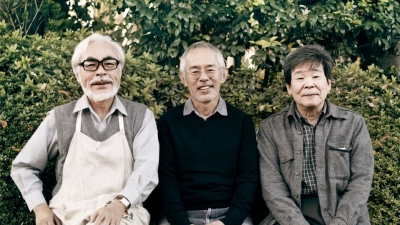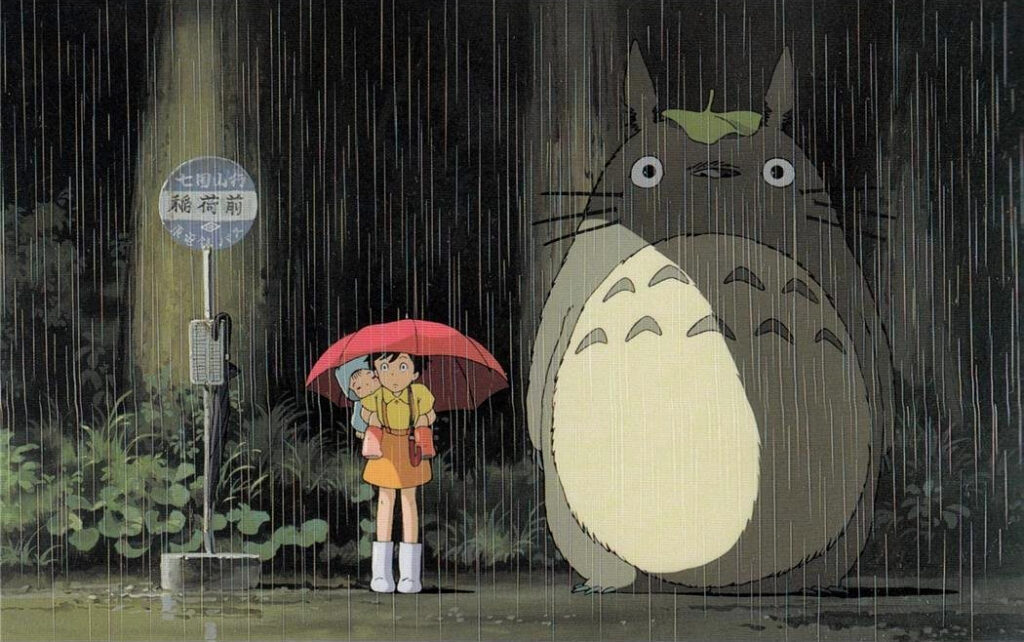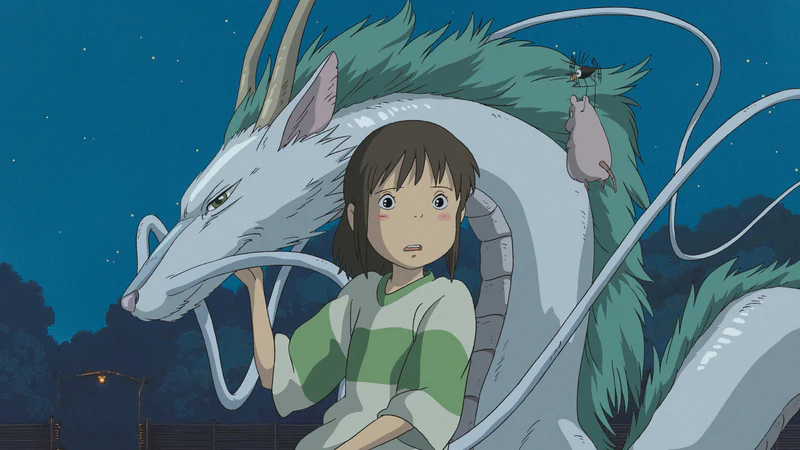One of the biggest animated films in 2023 was The Boy and the Heron. It won the Best Animated Feature Film at the 2024 Golden Globes and the 2024 British Academy Film and TV Awards (BAFTA). It’s also a favorite in this year’s Academy Awards.
Studio Ghibli is the company behind this critically acclaimed animated film. However, The Boy and the Heron is not the studio’s first international success.
Since it was established in 1985, the production company has created several animated films that have been warmly received by audiences and critics around the world.
Let’s take a look at its humble beginnings and how it catapulted into global success.

How Studio Ghibli Began
Studio Ghibli is behind some of the most popular animated features in Japan. Several of its productions made it to the international scene. Here are some of the studio’s most renowned hits:
- Spirited Away (2001)
- Howl’s Moving Castle (2004)
- Ponyo (2009)
- The Secret World of Arrietty (2010)
- The Wind Rises (2013)
- The Boy and the Heron (2023)
How did it all begin?
Hayao Miyazaki, the director of The Boy and the Heron, met fellow Japanese director, the late Isao Takahata, in the 1960s while they were working together for the animation studio Toei Doga. They developed a kinship that was instrumental in the creation of the iconic Studio Ghibli. Film producer Toshio Suzuki completed its triumvirate of founders.
The studio was founded on June 15, 1985, following the 1984 hit, Nausicaa of the Valley of the Wind, which Miyazaki directed. Suzuki was a producer of the film. Meanwhile, Takahata was Miyazaki’s long-time collaborator.
Miyazaki chose the name Ghibli, which is purportedly the nickname of the Italian aircraft Caproni Ca.309, which was used in Libya and North Africa. The word ghibli also refers to a Libyan desert wind. It just so happened that the director had a fondness for aircraft.
But what really made the name stick was how it encapsulated the studio’s goal of breathing new life—or new wind—into the anime industry.

Showcasing the Human Experience Through Animated Films
Studio Ghibli didn’t set out to make international hits. Its goal has always been to make animated reels that display poetic stories and highlight the human experience.
The studio was known for making animated features that didn’t have traditional villains. Yes, there were antagonists, but never in the vein of Scar in The Lion King, Ursula in The Little Mermaid, or Jafar in Aladdin. Some of Studio Ghibli’s antagonists are quite likable and backstories always aptly explain their behavior.
The studio’s first official project was Castle in the Sky, which was released in 1986. Miyazaki directed the animated feature about orphans Sheeta and Pazu.
They are on their way to the mythical flying castle in the sky called Laputa. But government forces and pirates are chasing the orphans because Sheeta is in possession of a valuable crystal necklace.
Miyazaki revealed that the film was inspired by the Welsh mining strike of 1984. The director said he admired how the people battled to save their livelihood as the mining industry declined. The use of children showcased honesty and innocence.
At first, the film didn’t make a lot of money at the box office. However, the studio made rereleases throughout the years and the film has since made more than $157 million.
In the first few years, the studio mainly produced the works of Miyazaki and Takahata. After gaining credibility, noted Japanese directors directed films for the studio. Here are some of Studio Ghibli’s collaborators:
- Yoshifumi Kondo
- Goro Miyazaki
- Hiroyuki Morita
- Hiromasa Yonebaash
Studio Ghibli’s Successful Films
There’s a reason why even non-Japanese moviegoers are familiar with the name Studio Ghibli. The studio has made successful and memorable films over its storied history that has spanned nearly four decades.
My Neighbor Totoro (1988)
The animated feature tells the story of two young sisters who move into an old house inhabited by spirits known as susuwatari. Totoro, a spirit of the forest with a large belly and grey fur, has become Studio Ghibli’s mascot.
The film enjoyed a worldwide impact for its ability to inspire a sense of wonder through its lush environment.
A year after the film’s release in Japan, American studio Streamline Pictures produced an English dub for the film that was used for Japan Airlines’ transpacific films. In 1993, the film was released in American theaters.
Walt Disney rereleased the animation in 2005 with a more popular U.S. voice cast. Sisters Dakota and Elle Fanning voiced the two main characters while Tim Daly and Lea Salonga voiced their parents. Frank Welker was Totoro.

Miyazaki wrote and directed My Neighbor Totoro and its original voice cast who were comprised of Chika Sakamoto, Noriko Hidaka, and Hitoshi Takagi. It received many awards during its run, including the Animage Anime Grand Prix, Mainichi Film Award, and Kinema Junpo Award.
Empire magazine also included the film in its ranking of the “100 Best Films of World Cinema” in 2010. British film magazine Sight & Sound listed it as the number one animated film in its 2012 critics’ poll.
What made the film so endearing was its animism, which is the technique of “putting life” into inanimate things.
Kiki’s Delivery Service (1989)
Before the success of My Neighbor Totoro died down, Studio Ghibli had another hit on its hands. Kiki’s Delivery Service is an animated feature based on the 1985 novel of Japanese children’s lit author Eiko Kadono.
Miyazaki directed the film. It tells the story of Kiki, a young witch, and her cat Jiji. Both run a flying courier service in the port city of Koriko.
It received critical acclaim and raked in awards. Streamline Pictures, again, produced an English dub of the film for Japan Airlines while Disney rereleased it with a more famous voice cast. Kirsten Dunst voiced Kiki while Phil Hartman breathed life into the character Jiji.
Kiki’s Delivery Service was the first release of the partnership between Studio Ghibli and Walt Disney. Disney released the Dunst-led dub in 1997, 1998, and 2010.
In Japan, the film’s initial release became a bigger success than Totoro. It was one of the highest-grossing films in Japan in 1989. It was released in Hong Kong in 1990 and was also a financial success.
Porco Rosso (1992)
Miyazaki directed another hit in 1992. Porco Rosso was about an anthropomorphic pig who was an ex-World War I aviator living as a freelance bounty hunter. The film’s title is Italian for “red pig.”
The film merged three of Miyazaki’s passions: animation, aircraft, and pigs (more on that later). It was also based on Miyazaki’s manga, The Age of the Flying Boat. Porco Rosso was supposed to be a short film for Japan Airlines but it was beautifully transformed into a full-length feature.
The film became Japan’s number-one picture that year. Not even Disney’s Beauty and the Beast could beat the flying pig at the Japanese box office.
Aside from box office success, Porco Rosso was also widely praised by critics. It received the 1993 Annecy International Animation Film Festival’s best feature-length film award in France and made it to the list of the Top 50 animated movies from Time Out magazine.
The original Porco Rosso was voiced by Shuichiro Moriyama. Michael Keaton performed the Walt Disney English dub in 2005.
Spirited Away (2001)
Miyazaki directed another hit—Spirited Away, the most successful Studio Ghibli film ever and Japan’s all-time highest-grossing film for almost two decades. Demon Slayer became the highest-grossing film in Japan when it was released in 2020 but Spirited Away sits pretty at number two.
The film is about 10-year-old Chihiro who enters the realms of kami, spirits in Japanese folklore. Chihiro’s parents were transformed into pigs and Chihiro takes it upon herself to free them from the spell.
What is behind Miyazaki’s fascination for pigs? In an interview, Miyazaki said: “The behavior of pigs is very similar to human behavior. I really like pigs at heart, for their strengths as well as their weaknesses. We look like pigs, with our round bellies. They’re close to us.”
In Spirited Away, Miyazaki chose to use pigs to symbolize the evolving eating habits of the Japanese, which he was unhappy with. Chihiro’s parents were turned into pigs because they were gluttonous.

“That’s how the Japanese eat nowadays. I think it’s very ugly. They catch prawns, squid, and crab from all over the world and just keep eating. All I ever see on the TV is cooking programs,” Miyazaki told BBC in another interview.
The film made history. It won the award for Best Animated Feature in the 75th Academy Awards, the only winner that was hand-drawn and the award-giving body’s only non-English language recipient. Its success also transcends the animated realm as it is regarded as one of the best films ever made.
It was also one of the recipients of the Golden Bear, the highest recognition bestowed by the Berlin International Film Festival in 2022.
The Boy and the Heron
Fans of Miyazaki, Studio Ghibli, and animation as a whole, are all hoping that The Boy and the Heron will become the second hand-drawn Japanese anime winner in the 96th Academy Awards. But it faces stiff competition from Spider-Man: Across the Spider-Verse and Elemental.
Over the past few months, the feature has already earned a number of prestigious awards:
- Golden Globe Award for Best Animated Feature
- BAFTA Award for Best Animated Film
- Toronto International Film Festival Best Film
- Los Angeles Film Critics Association Awards
- Boston Society of Film Critics Award for Best Animated Film
The film is about the journey of a boy named Mahito Maki during the Pacific War. Following his mother’s death, he ventures into an abandoned tower where he meets a talking grey heron in a fantastical world.
The premise is interesting enough. However, what makes the film more impressive is the absence of marketing.
There were no trailers or ads for the film—just a poster of the boy and the heron. Why? Miyazaki didn’t want anything to spoil the film.
Miyazaki’s involvement, who had already announced his retirement in 2013, was enough incentive for people to watch his comeback animated feature, especially since there is speculation that it may be his last.
From then on, it was purely word of mouth. People watched The Boy and the Heron because those who saw it said it was great.
The Japanese cast includes Soma Santoki, who voiced Mahito Maki, and Masaki Suda as the Grey Heron. The English-speaking cast includes big names like Robert Pattinson as the Grey Heron and Karen Fukuhara, Gemma Chan, Christian Bale, Mark Hamill, Florence Pugh, Willem Dafoe, and Dave Bautista in various roles. Child actor Luca Padovan voiced Mahito Maki.
What’s Next for Studio Ghibli?
Is The Boy and the Heron Miyazaki’s last feature? Miyazaki is 83 years old and admits he has slowed down. But Suzuki teased the public that the prolific director may already be thinking of his next project.
“He’s thinking about his next project every day, and I can’t stop him. In fact, I’ve given up,” Studio Ghibli founder and producer Suzuki said.
He discouraged Miyazaki from retiring because he didn’t want him to come back from retirement and make a failed film which has happened to so many filmmakers. “I no longer try to dissuade him, even if he were to make a failed film. In life, it’s only the work that delights him.”
However, it’s worth noting that Studio Ghibli isn’t just Miyazaki, although he has been responsible for most of the studio’s international hits. Since its inception, the studio has made 31 features, three television shows, dozens of short films and commercials, and several video games.
Check out some of Studio Ghibli’s box office successes that were not led by Miyazaki:
- The Cat Returns (2002) – directed by Hiroyuki Morita
- Tales from Earthsea (2006) – directed by Goro Miyazaki (Hayao’s son)
- Arrietty (2010) – directed by Hiromasa Yonebayashi
- From Up on Poppy Hill (2011) – directed by Goro Miyazaki
Miyazaki’s son, Goro, was initially hesitant to follow in his father’s footsteps but the animation and filmmaking bug eventually bit him. He also designed the Ghibli Museum in Mitaka. It showcases most of the studio’s work, much like Walt Disney Studios’ Disney Land.
As for Studio Ghibli’s next project, many believe that it could be a sequel to Miyazaki’s first hit, Nausicaa.